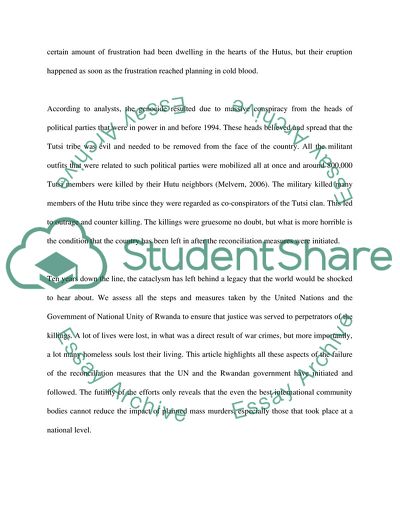Cite this document
(The Rwandan Genocide: the Most Atrocious War Crimes of History Research Paper Example | Topics and Well Written Essays - 2500 words, n.d.)
The Rwandan Genocide: the Most Atrocious War Crimes of History Research Paper Example | Topics and Well Written Essays - 2500 words. https://studentshare.org/history/1818453-rewanda-genocide
The Rwandan Genocide: the Most Atrocious War Crimes of History Research Paper Example | Topics and Well Written Essays - 2500 words. https://studentshare.org/history/1818453-rewanda-genocide
(The Rwandan Genocide: The Most Atrocious War Crimes of History Research Paper Example | Topics and Well Written Essays - 2500 Words)
The Rwandan Genocide: The Most Atrocious War Crimes of History Research Paper Example | Topics and Well Written Essays - 2500 Words. https://studentshare.org/history/1818453-rewanda-genocide.
The Rwandan Genocide: The Most Atrocious War Crimes of History Research Paper Example | Topics and Well Written Essays - 2500 Words. https://studentshare.org/history/1818453-rewanda-genocide.
“The Rwandan Genocide: The Most Atrocious War Crimes of History Research Paper Example | Topics and Well Written Essays - 2500 Words”. https://studentshare.org/history/1818453-rewanda-genocide.


